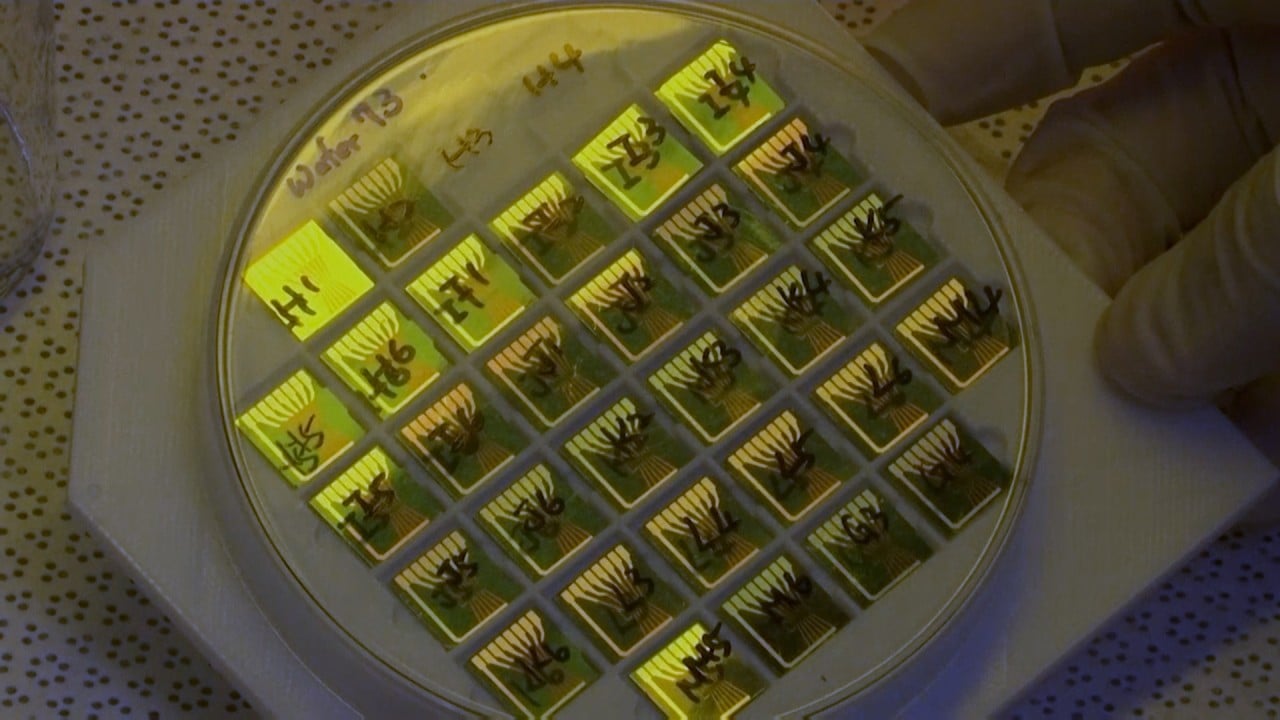
US-China tech war: basic research in AI, semiconductors and biotech gets closer to US$110 billion boost in US
- The US Senate Commerce Committee authorised US$110 billion in spending over five years on basic research in several areas, including quantum computing
- China’s 14th five-year plan calls for basic research spending to reach 8 per cent of total R&D expenditures, without specifying an amount of money
The US Senate has cleared an effort by legislators to set up US$110 billion in technology funding for basic research, in a move that borrows a page from Beijing’s playbook amid continuing competition between the two countries.
The Senate Committee on Commerce, Science, and Transportation voted to approve the Endless Frontier Act on Thursday, which would see billions of dollars poured into basic research – the advancement of scientific theories that underpin applied technologies – over five years, in areas that include artificial intelligence, semiconductors, quantum computing, advanced communications, biotechnology and advanced energy.
It also earmarked US$10 billion for the designation of at least 10 regional technology hubs.
While the bill still needs to be approved by the rest of the Senate and the House of Representatives, a consensus is emerging in the US that the country must do more planning to cope with China’s strategic technological challenge. In January, the Chips for America Act was passed as part of the National Defence Authorisation Act, which provisions spending to boost domestic semiconductor production.
The Chinese government has not set a specific amount of money to spend on basic research, but its 14th five-year plan, covering the period from 2021 to 2025, calls for spending in the area to reach 8 per cent of total research and development expenditures.

Still, the US is lagging behind China in policy commitments supporting technological development, according to Cameron Johnson, an adjunct faculty instructor at New York University and a partner at Tidal Wave Solutions.
“The Endless Frontier Act is trying to stimulate both US public and private entities in developing, enhancing, and accelerating new technologies and processes to move into the 21st century, and specifically, to compete with China,” Johnson said.
“The challenge is China has made new technology advancement and integration a key part of industrial policy for almost a decade.”
For the US, Endless Frontier marks a big shift in its strategy towards technological research, meaning “a state-led science and technology research mechanism may once again lead core technology industry development”, said Zhou Zipeng, an analyst at a think tank affiliated with the state-run investment bank China International Capital Corp, in a note this week.
TSMC joins US chip coalition in a potential blow to China
“It’s not officially a law yet, but the proposal is already a sign that the US is now taking China as its main rival,” Zhou wrote.
China’s goal is to boost spending to 3.76 trillion yuan by 2025, according to the National Development and Reform Commission, the country’s planning agency.

02:15
Taiwan researchers make Covid-19 self-test machine using biosensor chips for results in minutes
The push in spending comes amid the growing risk of technological decoupling between the world’s two biggest economies and Beijing’s ambitions to have an innovation-led economy.
With the Endless Frontier Act, the US is looking to maintain its lead in critical technologies. The main goal is to stimulate US public-private partnerships to advance research, commercialisation and education in key areas. It also places restrictions on cooperation with China and urges development in areas of competition between the two world superpowers.
Democratic Senate Majority Leader Chuck Schumer, one of the sponsors of the bill, said in a statement after it passed that it would allow the US to out-compete countries like China.
“The US, with this legislation, is trying to form a similar policy and support its goals, but without specific guidelines on how to do it,” Johnson said, adding that without these conditions, the legislation could flounder and become ineffective.

